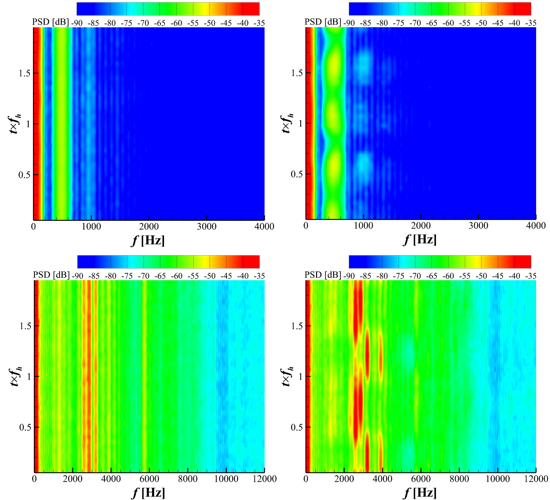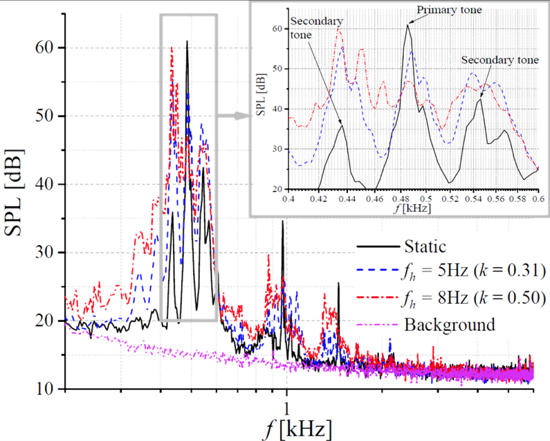The Aeroacoustic Characteristics of a Heaving Airfoil
Teng Zhou and Yuhao Sun
Last updated on March 24, 2020
Airfoil oscillation is a widely observed phenomenon in real applications, such as natural flyers, helicopter and drone blades, etc. The instantaneous flow pattern on a pitching airfoil is acquired by a high-speed PIV system.
All measurements were conducted in the low-speed open-jet facility in the Hong Kong University of Science and Technology. The tunnel outlet has a dimension of 0.4m × 0.4m, and the largest wind speed of 70m/s. A straight wing model with the profile NACA 0012 was tested, and it had a 100mm chord and 399mm span. The heaving motion was actuated by a voice coil motor. The far-field noise was measured by three microphones placed along an arc centered at the trailing edge of the airfoil
A comparison of the noise spectra between the stationary and heaving cases at flow speeds of 10m/s and 40m/s are given in the figures below, respectively. The following observations can be obtained: 1. The heaving motion suppresses the height of the primary tone and enhances the secondary peaks 2. When the flow speed is 10m/s, a broadband hump in the vicinity to the primary tone raises due to the heaving motion.


